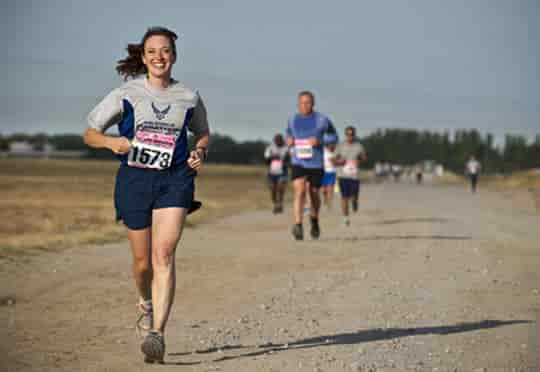Just six minutes of exercise improves memory while reducing the risk of Parkinson’s and Alzheimer’s disease.
The reward for doing 6 minutes of high-intensity workout is a brain that is more resilient to aging, Alzheimer’s disease, and Parkinson’s disease.
According to a study, short intervals of vigorous exercise improve the production of a protein involved in brain function related to memory, learning, and flexibility.
Our brain has the ability to learn, adapt, and function through a process known as neuroplasticity.
Brain-derived neurotrophic factor (BDNF) is the particular protein that boosts neuroplasticity and protects neurons.
Past research has suggested that higher levels of BDNF enhance memory storage, memory formation, improve learning processes, and increase cognitive function.
BDNF’s capability of protecting nerve cells has encouraged researchers to find out if this protein can slow brain aging.
Mr Travis Gibbons, the study’s first author, said:
“BDNF has shown great promise in animal models, but pharmaceutical interventions have thus far failed to safely harness the protective power of BDNF in humans.
We saw the need to explore non-pharmacological approaches that can preserve the brain’s capacity which humans can use to naturally increase BDNF to help with healthy aging.”
The team wanted to see if either calorie restriction or exercise or both have any effect on BDNF production.
For this, they compared the factors below to examine the solo and joint impacts:
- 90 minutes of low-intensity cycling
- Six minutes of high-intensity cycling intervals
- Fasting for 20 hours
- Fasting with exercise
Short but vigorous exercise appeared to be the most effective approach for elevating BDNF levels compared with light exercise or fasting with or without prolonged low-intensity workouts.
The 6-minute high-intensity workouts increased serum concentration of BDNF by five times.
Prolonged low-intensity cycling showed a slight increase in serum levels, from 336 pg/L to 390 pg/L, while fasting had no effect.
Such contrasting findings might be due to a cerebral substrate switch, the brain’s fuel source shifting from glucose to either ketone bodies or lactate.
It appears that the brain switches from glucose to lactate during exercise, leading to production of BDNF, while fasting causes an increase in ketone body delivery to the brain.
Platelets are tiny blood cells that store BDNF and exercise increased numbers of platelets by 20 percent compared to fasting.
The team also want to find out whether intermittent fasting with exercise would have a greater influence on BDNF and cognitive functions.
Mr Travis Gibbons, added:
“We are now studying how fasting for longer durations, for example up to three days, influences BDNF.
We are curious whether exercising hard at the start of a fast accelerates the beneficial effects of fasting.
Fasting and exercise are rarely studied together.
We think fasting and exercise can be used in conjunction to optimize BDNF production in the human brain.”
The study was published in the journal The Journal of Physiology (Gibbons et al., 2023).

